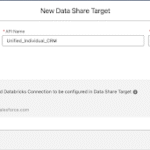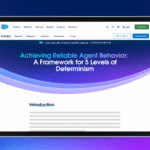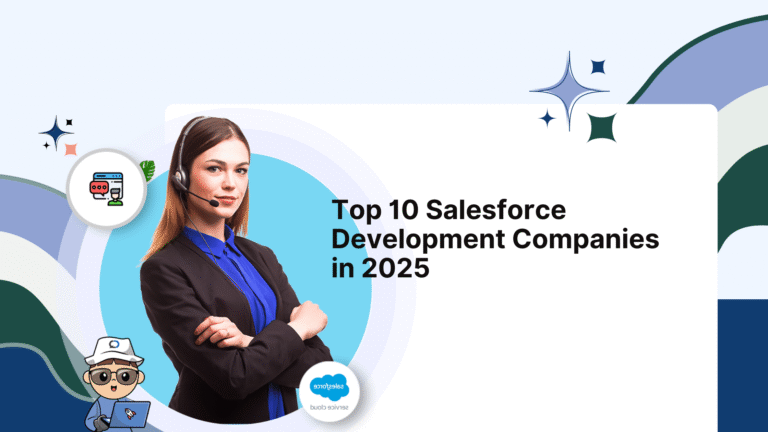As magical as artificial intelligence (AI) feels when it pumps out recommendations, recipes, or works of art in seconds, its greatest trick may be helping humanity build a more sustainable future.
Experts are still trying to understand the true energy cost of training and deploying AI, but there is no question we must act now to scale this technology responsibly and minimize environmental impacts. The good news is companies like Salesforce are already implementing guidelines to prioritize sustainable and ethical AI development.
While AI presents climate risks, it also has the potential to be a powerful tool to address climate change. Ecopreneurs — leaders who transform an idea into an environmentally-oriented product, solution, or business — are building a wide range of AI solutions that are contributing to positive climate outcomes.
So how can we ensure the environmental benefits of AI outweigh the risks?
At Salesforce’s Climate & AI Summit, we brought together researchers, technology leaders, and funders to share what we can do to build and scale sustainable AI models and leverage AI for climate action.
Here are the key takeaways from the summit:
Optimize AI for sustainability
AI has the potential to help address climate issues that scientists have been grappling with for years. At the same time, businesses deploying AI must be mindful of how the technology can exacerbate carbon emissions, water depletion, and the use of other valuable resources.
Every business developing and deploying AI needs a strategy to avoid unintended environmental consequences.
Sustainability is one of our core company values and a guiding principle for our development and deployment of AI. Salesforce’s blueprint for sustainable AI — developed in partnership between our AI Research, Sustainability, and Office of Ethical and Humane Use teams — focuses on three main components: right-sized models, employing efficient hardware, and prioritizing low-carbon data centers.
More Sustainable AI Options
Right-sized models
When it comes to AI models, bigger isn’t necessarily better. That’s one reason why Salesforce is focused on developing domain-specific models — small language models trained on particular data sets designed for a specific purpose.
Unlike their general-purpose large language model (LLM) counterparts, smaller models require less data and compute power. That means beyond reducing the environmental impact compared to LLMs, they’re also more affordable to operate, easier to train, and often outperform large language models, according to Salesforce research.
Efficient hardware
The energy efficiency of an AI model largely depends on the hardware it’s trained and deployed on. As AI (and power) usage soars, hardware manufacturers are developing equipment that prioritizes both better performance and higher efficiency. For example, NVIDIA reports its H200 graphics processing units (GPUs) are 50% more efficient than its predecessor.
Low-carbon data centers
Data centers are the physical home of the digital world. They house the hardware, servers, cooling systems, and other infrastructure needed to train and deploy AI models. And, whether it’s for you or an AI model, picking a home comes down to location, location, location.
Data center emissions vary widely from region to region because they rely on local electric grids for power. The more a given grid uses fossil fuels, the higher the local data center’s emissions will be. This makes it crucial to know where the data centers are that are training and deploying AI. To help reduce AI model emissions, Salesforce intentionally trained models in low-carbon data centers. These data centers are powered by electricity that emits nearly 70% less carbon than the global average — the equivalent to savings of 105 tons of carbon dioxide equivalents (tCO2e).
Explore AI for climate action solutions
We’re not just seeing companies focus on making AI more sustainable; we’re also seeing a surge of innovation to leverage the power of AI for climate action and sustainability.
From recycling centers to data centers, today’s ecopreneurs are using AI to power new solutions to address urgent climate challenges. At the Climate & AI Summit, ecopreneurs shared their visions for using AI to advance climate action.
Ecopreneurs at the Salesforce Climate & AI Summit share how they are using AI for climate action.
AI-powered recycling robots
Areeb Malik co-founded Glacier, a startup using AI-powered robots to better sort trash at recycling facilities.
“What AI really unlocks in this space is the data we are dealing with in recycling facilities, which is physical goods – a plastic bottle, cardboard box, a mail letter,” Malik said. “Those things need to be translated into digital in order to be handled properly, and AI has the capacity to do that.”
A single-source of truth for environmental data in Africa
Kate Kallot, founder and CEO of Amini, a company working to build Africa’s data infrastructure, spoke about how AI is helping collect critical environmental data across the continent.
Under Kallot’s leadership, Amini is laying the foundation for data collection that is helping Africa better understand its agricultural landscape and tackle challenges across the continent, like food insecurity.
“We wanted to build a company from the ground up on the continent to solve complex problems and move an entire population out of poverty — but then we realized we didn’t have data,” Kallot said. “When you think about Africa, the reason why environmental data is the most precious resource is that 60% of our population are farmers… so when you think about building AI solutions for the continent, this is where we decided to focus on enabling others to build solutions.”
Scalable, climate-aligned digital infrastructure
Cully Cavness, co-founder and president of Crusoe, a climate tech company focused on building more sustainable computing, shared how the business is building a climate-friendly approach to manage AI-driven electricity demand.
“Crusoe works at the intersection of AI infrastructure and computing infrastructure on one hand, and the energy industry on the other,” Cavness said. “We’re really in the physical world executing on building data centers that are aligning the future of computing with the future of the climate.”
Invest to accelerate AI for impact
The capital and resources need to match the climate problems we are trying to address. We need sustained investment and risk-tolerant capital to develop and scale AI-powered solutions to climate challenges.
“People need to realize that we are within striking distance now of actually being okay on climate,” said Gavin McCormick, CEO of WattTime.
“I’m talking about AI identifying essentially win-win solutions that can happen in as fast as 24 hours.”
Gavin McCormick
CEO, WattTime
As Gavin points out, many of the solutions to climate change are within reach, and AI can help us better identify and scale those solutions. Business leaders, venture funders, and philanthropists have an important role in supporting the experimentation, development, and scale of AI for climate solutions.
Supporting innovation at all stages
Corporations need to take advantage of the full capital stack that is at their disposal, from philanthropic dollars to venture investments, to accelerate innovation.
At Salesforce, we invest in ecopreneurs through our Salesforce Ventures Impact Fund and our philanthropic investments, leveraging different types of capital to best support ecopreneurs at different stages of their innovation journeys to help them bring their visions to life.
Through our Impact Fund, we invest in companies that are using AI to drive measurable social and environmental impact. For example, Pano AI uses deep learning AI and computer vision to automatically detect wildfires before they spread, helping customers worldwide with actionable intelligence to drive impact at scale.
Our philanthropic investments in AI innovation focus on investing in ecopreneurs who are often overlooked and empowering nonprofits with the resources they need to scale their impact with AI. Through the Salesforce Accelerator – AI for Impact, we provide flexible funding, technology, and Salesforce pro-bono expertise to climate nonprofits serving vulnerable populations.
Through this accelerator, nonprofit leaders have the opportunity to take risks and explore how AI could augment their superpowers. For example, Groundswell is using AI to identify and streamline enrollment of low-and-moderate-income (LMI) households in solar programs.
“It’s a game-changer for Groundswell, empowering us to expand our community solar and energy efficiency initiatives to meet this moment of unprecedented opportunity,” said Michelle Moore, CEO of Groundswell.
“We build community power, we are ready to scale, and integrating AI into our strategies will propel us toward our vision.”
Michelle Moore
CEO, Groundswell
Building a better future with AI for climate action
AI is a monumental and transformative technology. While it can no doubt impact everything from work to play, from writing smarter emails to generating images or videos, it’s imperative to see where it can do the most good. With its ability to quickly learn, understand, predict, and interact with us, there are perhaps few more worthy challenges to aim AI at than tackling climate change.











